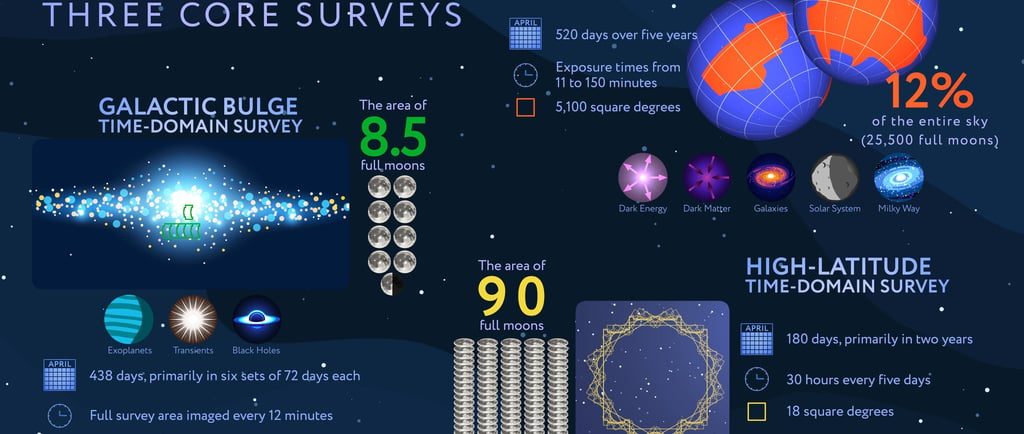ROMAN's MISSION: Unraveling Dark Energy and Dark Matter


Introduction to ROMAN's Ambitious Vision
The Roman Space Telescope, affectionately known as ROMAN, aims to revolutionize our understanding of the cosmos. As humanity’s quest for knowledge about the universe continues, ROMAN sets out to conduct extensive surveys that focus primarily on dark energy and dark matter, two critical components that drive the cosmic evolution of our universe. Additionally, ROMAN will delve into the demographics of exoplanets beyond our solar system, paving the way for unprecedented discoveries.
The Core Surveys of ROMAN
Central to ROMAN’s mission are three core surveys, designed to leverage its cutting-edge technology and high altitude capabilities. The first, the High Altitude Wide Area Study, seeks to map the universe on a grand scale, uncovering the distribution and effects of dark energy and dark matter across vast regions of space. This survey aims to include numerous galaxies and cosmic structures, providing pivotal insights into the fabric of the universe.
Next, the High Altitude Time Domain Survey will focus on the fleeting nature of astronomical events. By monitoring transient phenomena such as supernovae and gravitational waves, ROMAN will gather data that could shed light on the nature of dark energy. Understanding how these events interact with cosmic forces will enhance our comprehension of the overall structure and evolution of the universe, which is intricately linked to the mysterious entities of dark matter and dark energy.
Finally, the Galactic Bulge Time Survey will scrutinize our own Milky Way Galaxy's central region. With increasing interest in the gravitational dynamics that govern galactic structures, this survey will analyze the bulge's stars and their movements, allowing scientists to gather crucial data on dark matter’s influence on visible matter.
Implications for Astrophysics and Planetary Science
The implications of ROMAN's wide-ranging studies are profound. By unraveling the mysteries of dark energy and dark matter, the scientific community can address some of the most fundamental questions about the universe’s fate and its underlying mechanics. Understanding the population and properties of exoplanets will further expand our knowledge of planetary formation and the potential for life beyond Earth.
In conclusion, ROMAN’s survey initiatives embody the next significant steps in astrophysics and planetary science. By dedicating resources to explore the enigmatic realms of dark energy and dark matter, along with the demographics of worlds beyond our solar system, ROMAN will not only enhance our understanding of cosmic evolution but also inspire future generations of astronomers and space enthusiasts. As we await the launch and the ensuing discoveries, we can only imagine the myriad revelations that lie ahead in the uncharted territories of the universe.
